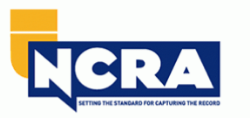Trial Presentation Skilled Support for Legal Practices and Court Cases
Trial Presentation Skilled Support for Legal Practices and Court Cases
Blog Article
Astound the Jury: Important Components of a Powerful Trial Discussion
Important aspects such as understanding the target market, crafting an engaging narrative, and grasping spoken and non-verbal communication are critical parts of a reliable discussion. As these factors link, they create a cohesive strategy that not just informs however also involves jurors on multiple degrees.

Recognizing Your Audience
Understanding your target market is a critical element of reliable test discussion. An effective discussion rests on the ability to understand the demographics, values, and predispositions of jurors. This comprehension informs exactly how disagreements are framed, evidence is provided, and sob stories are crafted, making certain that the message reverberates with the jurors on an individual degree.
Research suggests that jurors come from diverse histories and might have differing degrees of comprehending regarding lawful proceedings. Furthermore, comprehending the jurors' potential prejudices and life experiences enables the test presenter to prepare for objections and address issues proactively.
Efficient trial discussion additionally includes observing jurors' reactions throughout the proceedings. Engaging with jurors as people instead than a cumulative system is necessary in promoting a solid link in the court.

Crafting a Compelling Story
Crafting a compelling narrative is crucial in leading jurors via the intricacies of a situation. A well-structured narrative not just streamlines detailed legal principles but likewise involves jurors on an emotional level, making the information more relatable and memorable.
To attain this, attorneys need to start by recognizing the core message they desire to share. This message needs to reverberate with the jurors' worths and experiences, fostering a connection that goes beyond simple facts. The story must unravel practically, presenting occasions in a clear sequence to stay clear of confusion. This chronological method can help jurors comply with the progression of occasions, stressing domino effect.
Including human elements-- such as individual stories or anecdotes-- can better enhance the story's effect. These elements evoke empathy, permitting jurors to imagine the consequences of the situation on realities. In addition, using a consistent theme throughout the discussion enhances the major disagreement, making it much easier for jurors to maintain crucial points.
Ultimately, an engaging narrative changes a trial presentation from a plain recounting of truths into an influential tale that captivates the jury, encouraging them to ponder with both factor and emotion.
Using Aesthetic Aids
Integrating visual help into a test presentation can dramatically enhance jurors' understanding and retention of details. Aesthetic materials such as charts, representations, photos, and video clips can change intricate legal principles and proof right into quickly absorbable styles. By involving multiple detects, these help enable jurors to visualize the case's crucial components, making it less complicated for them to adhere to along and grasp detailed information.
Additionally, well-designed aesthetic aids can emphasize vital factors and emphasize partnerships in between various pieces of evidence. Timelines can effectively highlight the sequence of occasions, while annotated images can make clear certain details pertinent to the instance. This not just help in understanding however additionally strengthens the story offered by the lawyer.
It is crucial, however, to make sure that aesthetic help are pertinent, clear, and expertly provided. Excessively complex or cluttered visuals might overwhelm jurors and take away from the message. When utilized judiciously, visual aids serve to enhance the oral disagreements and boost the overall impact of the trial discussion. Ultimately, reliable aesthetic interaction can be an effective device in encouraging jurors and assisting them get to informed final thoughts.
Understanding Verbal Interaction
Efficient spoken communication is vital in a test discussion, as it acts as the main means through which lawyers share their debates and link with jurors. Mastering this skill entails clearness, persuasion, and interaction. Lawyers have to articulate their points clearly and concisely, avoiding lawful jargon that might perplex jurors. Simpleness in language promotes understanding and helps jurors comprehend complicated issues presented throughout the test.
In addition, tone and pacing visit their website significantly effect how messages are obtained. A confident tone conveys authority, while ideal pacing enables jurors to soak up details without feeling bewildered. Lawyers must likewise differ their singing inflections to stress crucial points and keep jurors' rate of interest throughout the presentation.
In addition, the company of verbal disagreements is crucial. Structuring the narrative realistically and coherently helps jurors comply with the attorney's line of reasoning, making it much easier for them to maintain critical info. Using influential techniques, such as narration, can also boost the emotional vibration of the debates offered, thus producing a much more profound connection with jurors.
Ultimately, understanding spoken interaction not just enhances an attorney's case yet additionally promotes trust and rapport with the jury, considerably improving the chances of a desirable verdict.

Involving With Body Movement
Nonverbal communication plays an important role in test discussions, usually conveying messages that words alone can not reveal. Body language, including motions, posture, facial expressions, and eye call, substantially affects how jurors view the integrity additional resources and sincerity of the speaker. A certain stance, with shoulders back and an open position, can infuse trust, while closed-off body language might recommend defensiveness or uncertainty.

Face expressions should mirror the feelings linked with the situation, reinforcing the narrative existing. A genuine expression during a poignant minute can evoke compassion and enhance the emotional appeal. Eventually, understanding body movement is vital for reliable trial discussions, as it boosts spoken interaction and develops an engaging presence that resonates with the jury.
Conclusion
Finally, mesmerizing the court demands a critical strategy that incorporates understanding the audience, crafting a compelling narrative, making use of aesthetic aids, grasping spoken communication, and engaging through body movement. Each element plays a vital duty in creating a powerful trial discussion that resonates with jurors on both psychological browse around here and intellectual degrees (trial presentation). By incorporating these parts effectively, attorneys can substantially boost their capacity to persuade and affect jury decision-making
Report this page